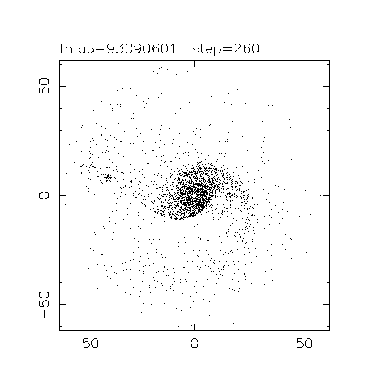
All objects that we see shining in the night sky are not stars. Visible to the naked eye are the sun, the moon and five planets. When viewed through a telescope, some points appearing to be stars are resolved into groups consisting of many stars, these objects are called stellar clusters. The only galaxies that can be seen without the aid of a telescope are the Andromeda galaxy and the Magellanic Clouds. The latter are two small galaxies that are satellites to the Milky Way. To the naked eye they are seen as diffuse patches of light. Today we know that galaxies are gigantic stellar systems far away from our own galaxy, the Milky Way. But, it was not until the 1920's that the nature and size of the galaxies, were understood. A typical size of a galaxy is of the order of 100000 light years. The number of stars it contains is around 100 billions, and the distance to our nearest big neighbour, the Andromeda galaxy, is around 2 million light years. You easily feel lost when trying to imagine these huge distances. The best thing to do is to gradually build up a sense of relative distances. From the Earth to the Sun, the distance is 8 light minutes. Reaching further out, the distance to the nearest star is approximately 4 light years. From our sun to the galactic centre the distance is around 25000 light years and then we have reached the galactic scales. Galaxies are the largest single objects in the Universe and the dominating force structuring a galaxy is the gravity. They are not evenly spread in the Universe. There exists single galaxies, some galaxies form pairs, most galaxies are found in groups, and the groups are gathered into large clusters. Greater structures than clusters of galaxies have not been found, but observations indicate that clusters might form chains or bubbles surrounding empty regions of space. Photographs of galaxies show lots of structure. Beside stars, galaxies also contain gas and dust. Different types of galaxies are more or less rich in gas content and since stars are formed out of gas, star formation rates vary a lot.
This is a list of my published papers.
I am a member of Commission 28: Galaxies belonging to Division VIII: Galaxies and the Universe of the The International Astronomical Union.